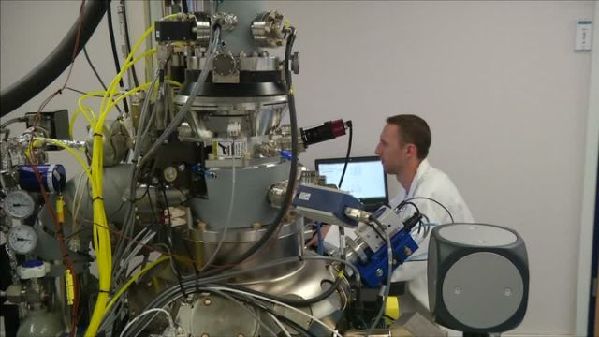
Modern microelectronic devices contain billions of components crammed into thumbnail-size flakes. The chemical industry uses nanoparticles to make better cleaning products, while pharmaceutical companies use them for delivery of medicines straight into human cells.
Scientists at the Luxembourg Institute of Science and Technology have combined a specially designed spectrometer with a commercially available helium ion microscope to build a very high-resolution optical device capable of looking into these tiny worlds. It allows them to see objects 100,000 times smaller than the diameter of a human hair.
"We can follow where those nanoparticles have been uptaken into, for example, human cells," said LIST senior researcher David Dowsett. "And also we can see whether or not a labeled drug is present within the cell, in the same place as the nanoparticle. So we can really start to test whether or not a delivery system is effective."
One of the first practical uses was checking the effectiveness of new cosmetic products. For instance, the new microscope helped scientists test the effectiveness of shampoos containing silver nanoparticles, which are highly toxic to bacteria living in human hair.
"We can also analyze the hair as well to see whether the shampoo, for example, penetrates just onto the outside or to see how deeply it's penetrated," Dowsett said.
Researchers say the new microscope could also find applications in the development of more efficient batteries for electric cars and portable electronic devices.
Vocabulary
microelectronic:[电子] 微电子的
pharmaceutical:制药(学)的
flake:小薄片
nanoparticle:纳米颗粒
来源:VOA
编辑:丁一
上一篇 : 'Green' Way to Charge Phones
下一篇 :
电话:8610-84883645
传真:8610-84883500
Email: languagetips@chinadaily.com.cn